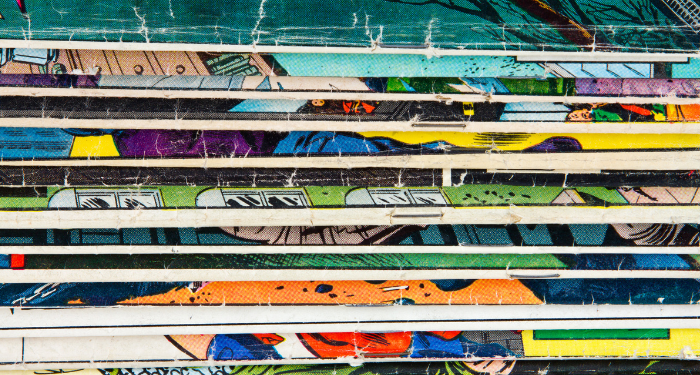
Retro Comic Rewind: Hangman Comics
Some comics go down in history as masterful examples of the craft and are beloved by multiple generations. And others end up at the landfill. In this series, I’ll be looking back on some forgotten series to better understand what kind of comics our ancestral nerds were reading in the days of rotary phones and record players.
Today’s subject: Hangman Comics!
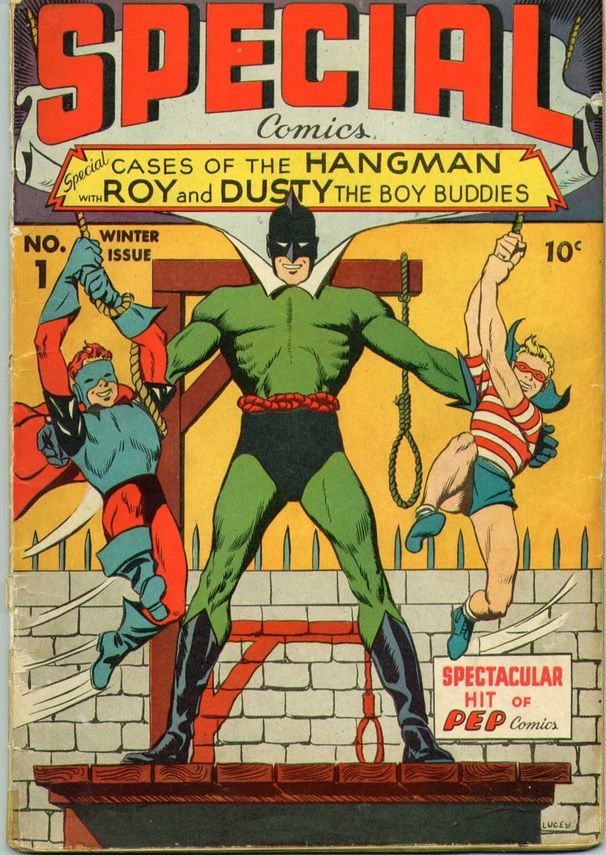
The Context
Before DC and Marvel developed their superhero universes…before MLJ changed its name to Archie Comics to reflect their most popular property…there was the MLJ universe of heroes. Superheroes were at the peak of their first round of popularity in the 1940s, and MLJ contributed to the super-surge with their own line of heroes.
MLJ’s heroes include the Shield, who beat Captain America by a year to become the first patriotic superhero, and the Black Hood, who hung up his mask and became a private detective after being outted by a guy named Needlenoodle, which is just the greatest thing I’ve heard all day.
And, of course, there is the Hangman.
The Creators
MLJ (an acronym for the founders’ first names: Maurice Coyne, Louis Silberkleit, and John Goldwater) was established in 1939. Archie Andrews wouldn’t come along for a couple of years. In the meantime, the company published everything but teen humor: sci-fi, adventure, war stories, and superheroes.
Harry Lucey, best known for his decades-long run on Archie, does many of the early stories here. He’s really good at showing how evil thoughts transform each villain from put-upon everyman to remorseless killer.
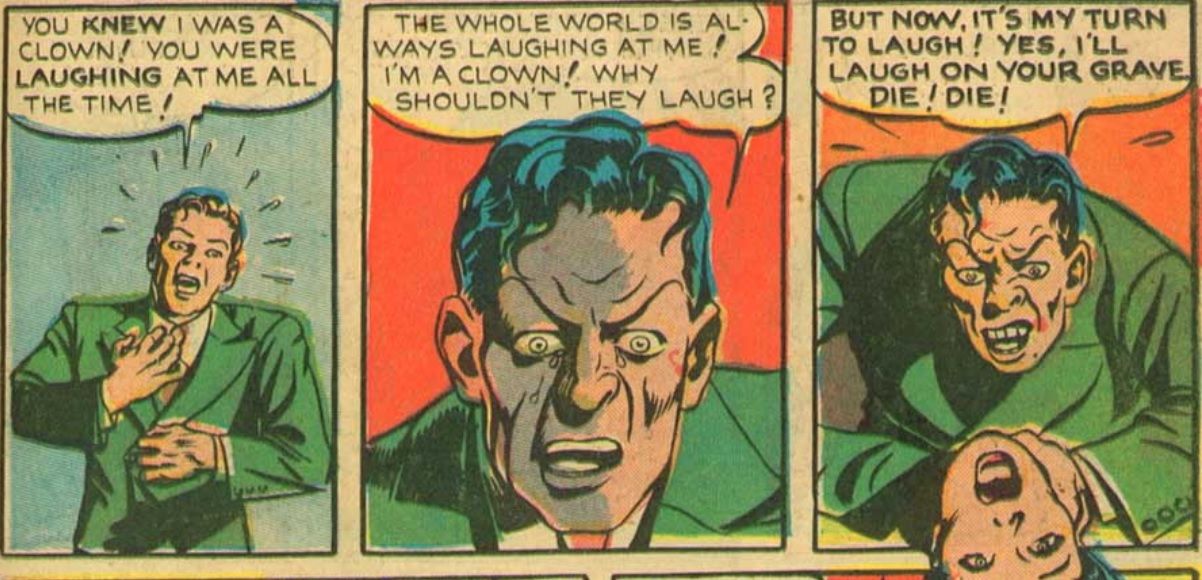
After Lucey left the book, Bob Fujitani, who was already doing some stories, picked up the slack. His splash pages look great, but his animals, not so much. Other notables include Paul Reinman, who often worked with Jack Kirby during the 1960s on iconic titles like Fantastic Four, and Irv Novick, who absolutely killed it on Batman comics in the 1970s.
The Comic
I didn’t tell the whole truth before: this book went by several names over its nineteen-issue run. The titles for the series are: Special Comics #1, Hangman Comics #2-8, and Black Hood Comics #9-19. I’ll only be looking at the first eight issues, as Black Hood Comics is really a whole other book.
This series is not the Hangman’s first appearance — he debuted in Pep Comics #17 — but Special Comics provides a handy recap of his origin so you can start from there. The Hangman is really Bob Dickering, brother of the Comet, another MLJ superhero. After the Comet is killed in the line of duty, Bob ignores his brother’s dying request that he live a normal life and becomes the Hangman, picking up where the Comet left off.
Still, there are some points of confusion never clarified here. I don’t know what Dickering does for a living, though he seems to hang around the newspaper office a lot. And they don’t explain how he makes the shadow of the gallows — his trademark — appear over the villain’s face at each climactic moment. It’s a cool effect, but I’m not clear on how he does it. Is he making shadow puppets? Does he have a custom-made flashlight with his logo painted on?
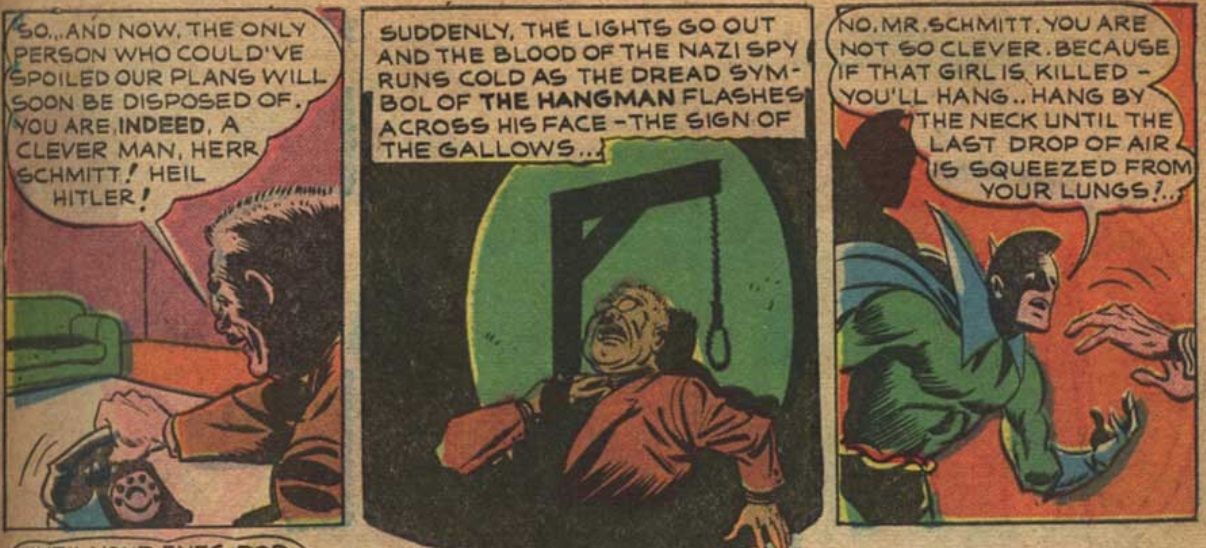
It only takes until Issue 2 for him to start beating up Nazis, and Issue 3 has him confronting some horrible Japanese stereotypes. Issue 3 is also notable for its goriness: our villain, the Executioner, lops off people’s heads with a bloody axe and then holds their severed heads while laughing. I assume this excessive nastiness was because a) Pearl Harbor happened a few months before this issue came out, and b) Americans were unbelievably racist against the Japanese (and, well, everyone else, but that’s not relevant here).
Speaking of executions, you’d think the Hangman, with a name like that, would kill his foes on a regular basis, but nope. His opponents all seem to destroy themselves, conveniently tripping into pools of lye or off of clock towers.
Needless to say, he doesn’t have a whole lot of recurring villains.
There’s also a back-up feature starring Roy the Super-boy and Dusty the Boy Detective, which are hands-down the worst superhero names I have ever heard. (Speedy, I apologize for everything I ever said about you.) They’re the sidekicks of two other MLJ heroes: the Wizard and the Shield, respectively. The “Boy Buddies” are pretty bratty, and their stories are undiluted war propaganda that encourage kids to want to grow up faster so they can go murder Japanese civilians, so, um. There’s that.
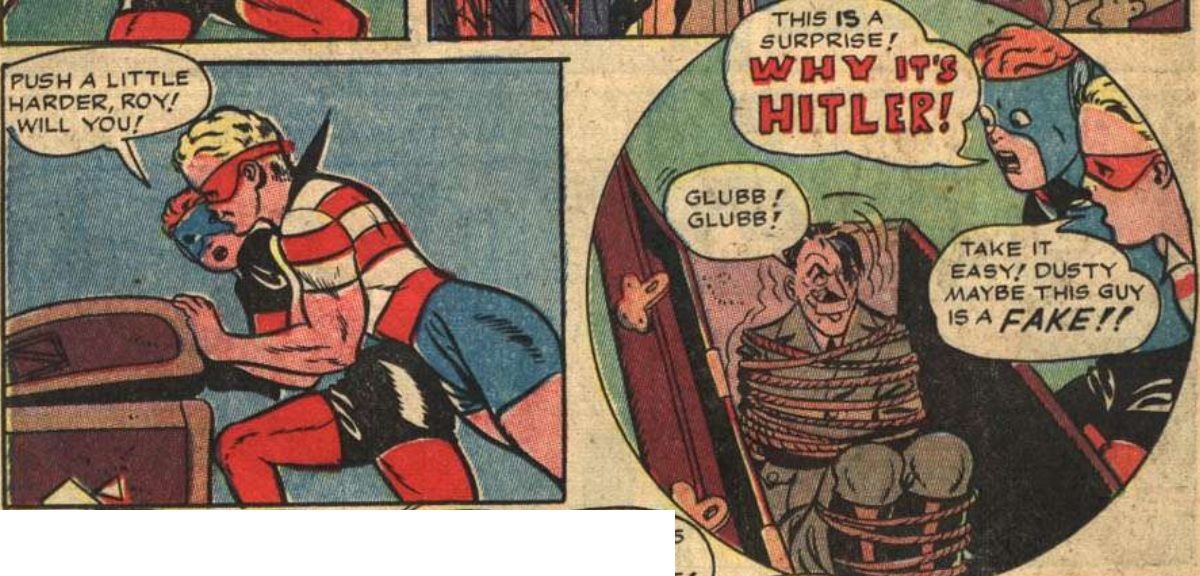
The Hangman does not have a sidekick, but he does have a girlfriend, reporter Thelma Gordon, who knows his secret identity and sometimes helps him out. Usually by shooting people.
The last few issues ditch the propaganda and all trace of logic. In a story from the last issue, Hangman encounters a pirate ship that somehow time-traveled from 1498. The pirates nearly murder him before an octopus randomly pops out of the ocean to kill the pirates instead.
In Issue 9, another hero, the Black Hood, took over the title, possibly because he was more popular than the Hangman: Issue 8 has advertisements for his radio show. The Hangman appeared as a back-up feature for a couple of issues and then disappeared from the title.
The Legacy
It seems weird to think of MLJ as a major superhero publisher, now that they’ve aligned themselves with Archie so hard that they changed their name to his. It’s especially weird given that Archie is so G-rated while the Hangman definitely falls on the grim-and-gritty side of the superhero scale. A lot of it reads like a horror comic.
But while we could argue that MLJ/Archie abandoned their chance at a superheroic legacy to focus on Archie, their heroes were beloved enough to warrant several reboots by MLJ and DC and their various imprints. These series all took different approaches — one made the Hangman a villain; one gave him a son to carry on the family legacy — but the attempts in and of themselves are a tribute to the lingering fascination with MLJ’s superheroes.
Even more enduring is their concept of a shared universe. Those are normal now, but that wasn’t the case in the ’40s. Superman and Batman may pal around on the covers of World’s Finest, but they were confined to separate stories in the comics themselves. Outside of team books like Justice Society of America, it was every hero for himself. What MLJ did by casually having the Shield and the Wizard dress up as ghosts to try to scare their sidekicks into behaving themselves was truly creative. Stupid, but creative.
Hangman Comics in particular, however, is not the best superhero comic I’ve ever read. It’s enjoyable enough, but a lot of it doesn’t make sense. A minor but fun example from the first issue: a man is punched to death, but the doctor who examines the body can’t figure out how he died. He just shrugs and goes “heart attack, I guess?” Sir, where did you get your doctorate, clown school?
Want more vintage goodness? Check out previous editions of RCR: Race for the Moon, Stamps Comics, Tippy Teen, and Winnie Winkle!











